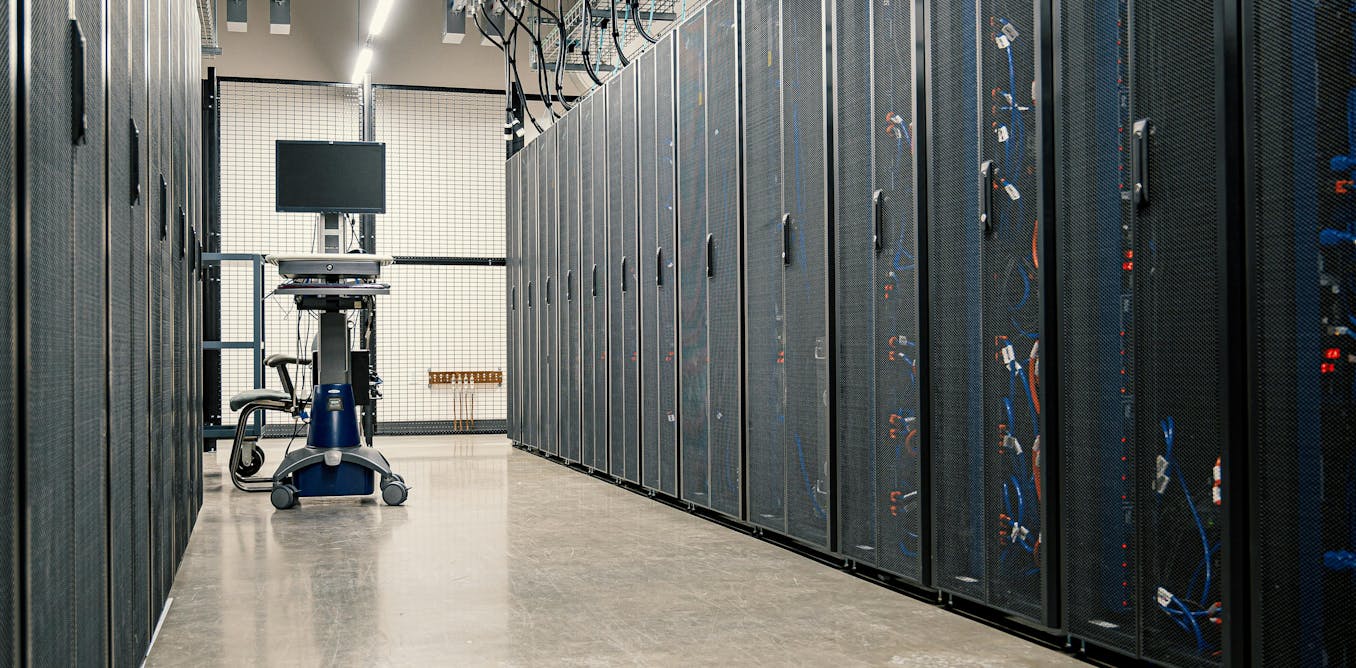In today’s world, huge amounts of data are being created all the time, yet more than half of it is never used. It stays in silos, or isn’t managed, or can’t be accessed because systems change, or isn’t needed because business priorities change. This “dark data” accumulates in servers and storage devices, consuming electricity and inflating the digital carbon footprint.
It may appear harmless, but this growing mass of digital waste has consequences for the environment. Storing unused or obsolete digital data requires constant power for servers and cooling systems. This drives up electricity consumption and greenhouse gas emissions. Dark data alone is estimated to generate over 5.8 million tonnes of CO₂ annually. This is the equivalent of emissions from 1.2 million cars per annum.
Dark data also accelerates e-waste from hardware replacement and depletes resources through manufacturing, such as using recycled raw materials, and water-intensive cooling.
Organisations collect vast volumes of information during routine operations. But it might never be analysed or repurposed. System log files that track user activity, errors and transactions remain untouched after initial storage. We’re talking about every email, photo, video, or unused spreadsheet saved on a server. Think of it like forgotten boxes stored in a warehouse, except this warehouse uses energy all the time. Managing dark data is not only a matter of working efficiently; it is a pressing sustainability issue.
The solution lies partly in effective knowledge management practices.
This means making an effort to reduce the environmental impact of digital systems, particularly those related to data storage and usage. Organisations should collect, manage and retain data with energy consumption and carbon emissions in mind.
My research aimed to find ways to do this. I collected 539 quantitative and qualitative questionnaire responses representing North America at 31.9% (172), followed by Europe at 21.5% (116) and Asia at 19.9% (107). Africa (10.8%) and Australia (9.8%) were represented too, while South America (5.8%) and Antarctica (0.4%) had the smallest shares.
The findings highlighted the need for data governance, data security and continuous learning within organisations. It showed the value of energy efficient information technology practices, centralised knowledge repositories and working across disciplines to address dark data risks.
My research also provided organisations with guidelines to make digital decarbonisation part of the way they operate and make decisions. This would improve organisational efficiency, reduce carbon footprints and promote the reuse of valuable data insights.
The digital dilemma: more data, more emissions
As digital technologies become more embedded in everyday operations, the demand for data storage and processing power surges. Globally, data centres already account for about 2% of greenhouse gas emissions, equal to the environmental impact of the aviation industry. The figure is expected to double by 2030 as digital adoption accelerates.
But dark data isn’t getting much attention. This is because it is mostly unstructured, hidden in legacy systems or backup servers. Information technology and sustainability teams tend to overlook it. It’s expensive to manage and easy to ignore. But it consumes costly storage space and drives up energy bills for powering and cooling servers. It also requires ongoing backup, security and compliance measures despite delivering no business value.
Knowledge management to tidy up dark data
Knowledge management strategies can address the dark data problem. Knowledge management acts like a smart organiser for all the information that organisations hold. It makes it possible to find hidden or forgotten files buried in systems, understand whether the data is useful or outdated, and decide on the best course of action. That can be by turning valuable data into insights or securely deleting what’s no longer needed.
This reduces wasted storage, cuts costs, lowers the environmental impact and ensures that the information kept actually supports better decision-making.
We recommend two things organisations can do: classification and streamlining.
1. Classification: organise, tag, and unlock value
Classification is the first step in bringing order to data chaos. It involves discovering, tagging, categorising and assessing data to determine its relevance and value. Artificial intelligence (AI) and machine learning can help with this.
This approach not only reduces waste, but also unlocks hidden opportunities. For example, previously unused customer feedback data can be analysed for product innovation, or old project documentation can inform new initiatives.
2. Streamlining: stop hoarding, start reducing
Streamlining is about developing leaner, cleaner data environments. It calls for robust data governance, including clear retention policies, regular audits and employee education on digital hygiene. Using AI tools, organisations can identify duplicated, outdated, or irrelevant files and automate their safe deletion.
It’s not just a technical process. It involves cultivating a culture that values purposeful data usage and discourages unnecessary hoarding. When employees understand the environmental cost of unmanaged data, they become more responsible stewards of digital information. The outcome is a more agile, cost-effective and sustainable data ecosystem.
One example of an organisation doing this is the car brand, BMW Group. It’s made digital decarbonisation part of its production processes.
Google has invested in sustainable IT practices, including energy-efficient data storage and processing. The data centres of the company have been carbon-neutral since 2007, and it is working towards running its operations on 100% renewable energy.
Let data work smarter, not harder
Digital sustainability does not demand that organisations do less; it encourages them to do better. Rethinking dark data management is a step towards reducing digital emissions and conserving resources.
Through knowledge management strategies like classification and streamlining, organisations can turn an overlooked liability into a strategic asset.
Data should serve us, not burden us.
![]()
Hanlie Smuts does not work for, consult, own shares in or receive funding from any company or organisation that would benefit from this article, and has disclosed no relevant affiliations beyond their academic appointment.



